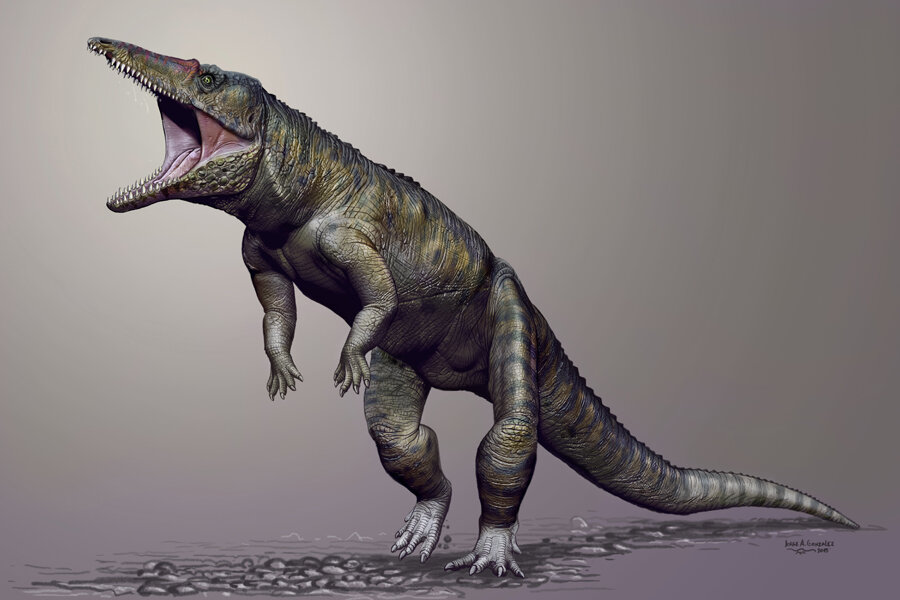Before dinosaurs ruled, the ‘Carolina Butcher’ was top croc
Loading...
Imagine you’re being chased down by a nine-foot-long crocodile. Now look behind you – the crocodile is running on two legs.
If you were small game in Triassic North America, this could have been your frightening reality.
A team led by Lindsay Zanno, director of the Paleontology and Geology Research Laboratory at the North Carolina Museum of Natural Science, has reconstructed the fossil remains of one of the earliest and largest crocodylomorphs. Noting its fearsome teeth, they called it Carnufex carolinensis, which translates to “Carolina Butcher.” This bipedal beast was described for the first time today in Scientific Reports.
“‘Butcher’ seemed a very appropriate way to get that into the minds of people,” Dr. Zanno told LiveScience.
Unearthed from the 231-million-year-old sediment of North Carolina’s Pekin Formation, Zanno's Carnufex specimen was fragmented – parts of the skull, spine, and forelimb were found intact. But with a high-resolution surface scanner and reference parts from close ancestors, Zanno’s team was able to reconstruct the ancient croc. Carnufex was big for its time – about nine feet long – and walked on its hind legs.
Carnufex was an early member of Crocodylomorpha, a once-diverse group of animals that has since been reduced to modern crocodilians. As we know them, alligators and crocodiles are hulking and short-legged. But many ancient crocodylomorphs were actually quite spry – some looked more like foxes, dressed in reptilian armor. And while many were only mid-sized, Carnufex would have made a viable top-tier predator.
In Triassic North America, it was crowded at the top of the food chain. Early theropod dinosaurs vied for dominance alongside large reptiles called poposaurids and rauisuchids. But it was previously unclear whether large crocodylomorphs occupied the same trophic level.
“We knew that there were too many top performers on the proverbial stage in the Late Triassic,” Zanno said in a statement. “Yet, until we deciphered the story behind Carnufex, it wasn't clear that early crocodile ancestors were among those vying for top predator roles prior to the reign of dinosaurs in North America.”
A mass-extinction event ended the Triassic period, killing off most non-dinosaur predator species in the process. In their place, theropod dinosaurs thrived and reigned for 135 million years. But a few small crocodylomorphs survived the fallout, eventually giving rise to modern crocodilians. The butcher may be long dead, but its legacy lives on.







